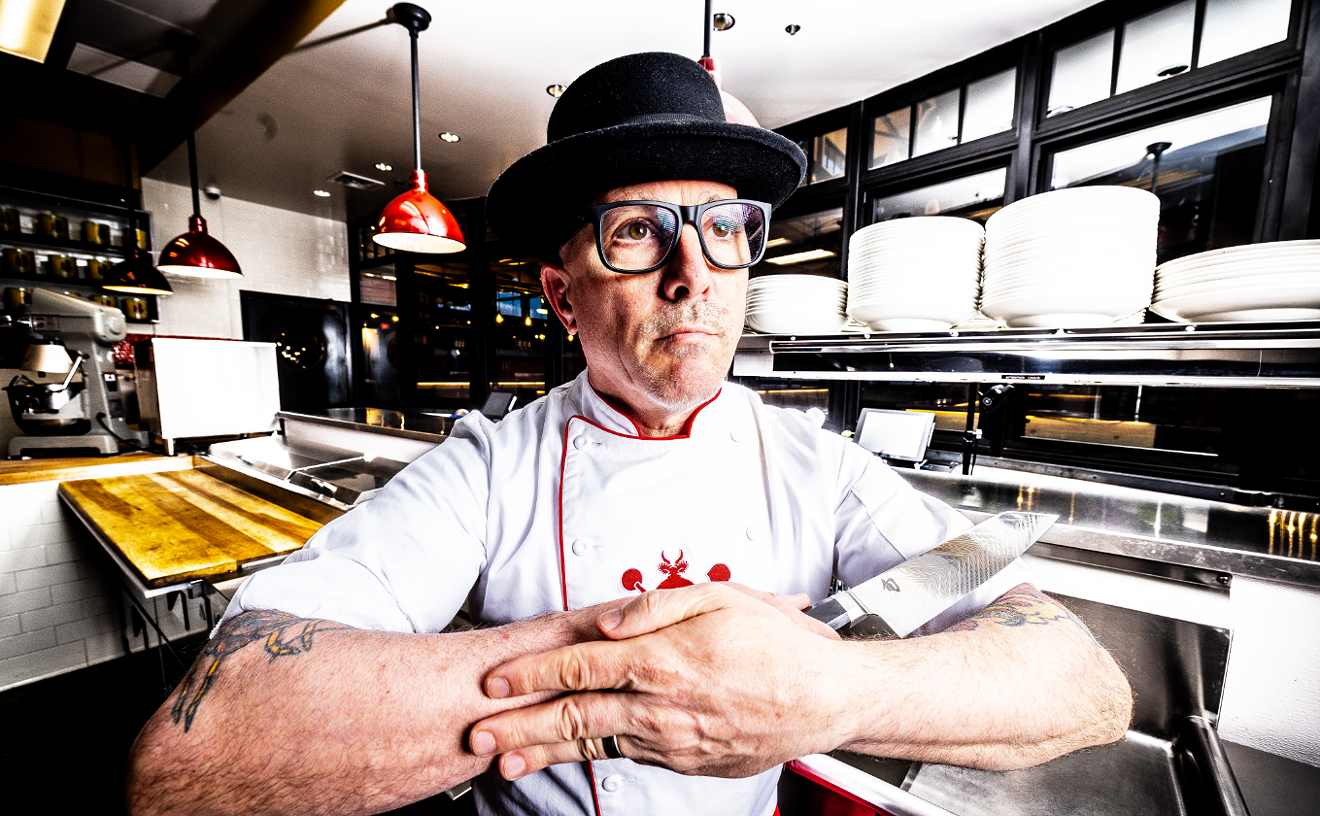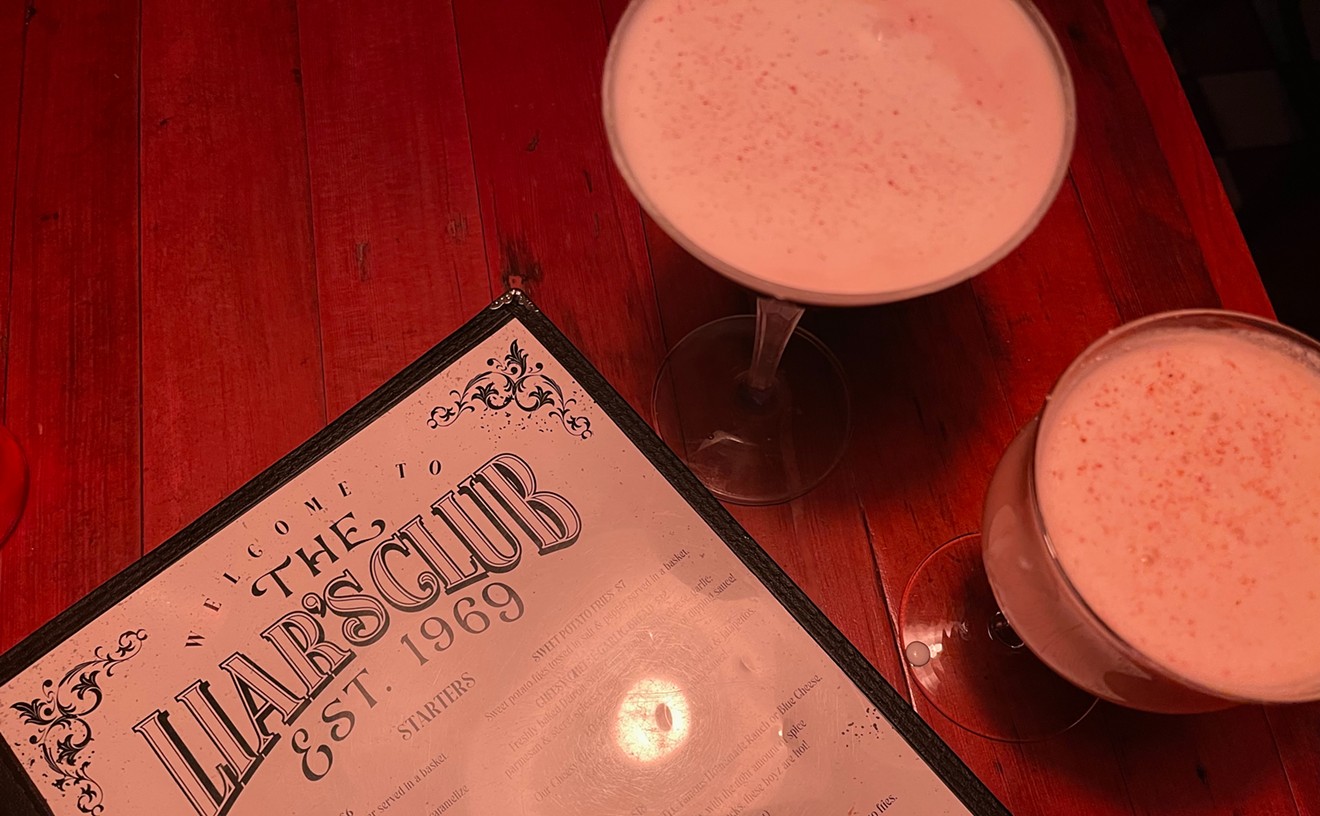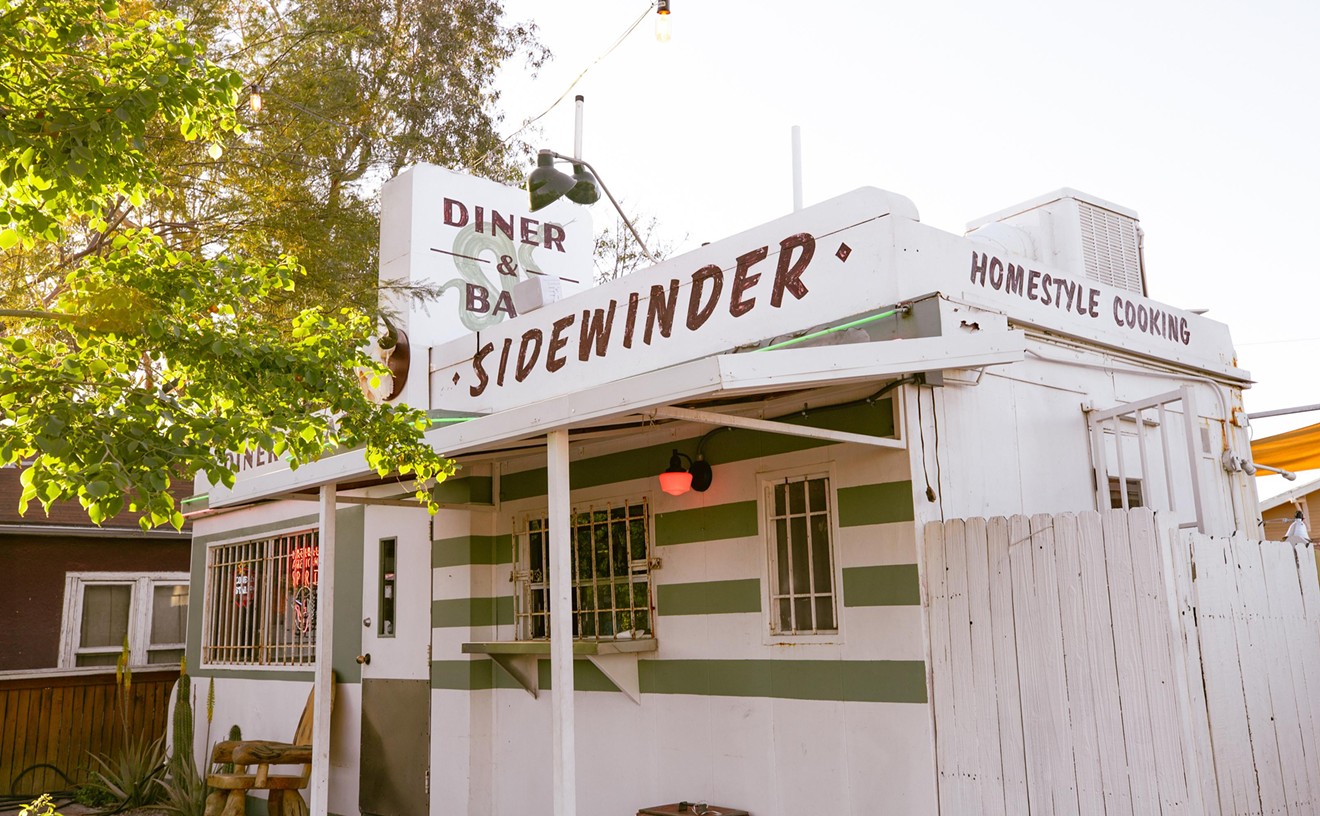They're a virile lot, at that -- traditionally robed fellows with close-cropped pates and happy, amused expressions, hanging around like high school kids on their senior band trip. They've come to SCA for a week, to perform traditional music and dancing, and to create a "sand mandala," a beautiful and extraordinarily intricate design in colored sand, painstakingly rendered by the monks on a flat surface in the center's lobby. I've come to drag one of them away from his Arts Center schmoozing duties for a bite to eat and a chat.
My guest's interpreter, named Kalden, tells me it will be a few more minutes before they can get away. I tell him I'll head over to the restaurant and get a table, and they can join me there whenever they're ready. Near the door I notice a large stash of munchies, Triscuits and the like, with a sign noting that the refreshments are for the monks only. As I walk across to the Jewel of the Crown, the Indian eatery next to SCA, I wonder how hungry these gentlemen will be, and also how much they'll appreciate sitting down to Indian food in America. Maybe they'd prefer a nice hamburger or a pizza.
Kalden is brought in five minutes after I'm seated, along with my guest -- apparently the senior and most revered member of the visiting group, Lama Lobsang Chodak, a graying, smiling, sly-looking man in his late 40s. Definite bait for the Dharma Groupies. Chodak bows respectfully when he's presented to me, and I reflexively return the gesture. This makes him laugh softly. For some reason, almost every question I ask gets this same quiet little chuckle when it's relayed to him.
We order before getting down to business. Tandoori chicken for me, and for my companions . . . I have no idea. They ask the middle-aged lady waiting on us if she speaks Hindi. She happily replies in the affirmative, and they converse at length. The only word I recognize is "Coke." It's what Lama Chodak wants to wash down his lunch. After the hostess leaves, I ask Chodak if it's nice to hear a voice from home. His reply, through Kalden, is diplomatic: "He also likes English language, but he doesn't know how to speak."
I decide to get Kalden's particulars before turning to his boss. This thin young man, who wears a suit rather than robes and has a full head of hair, is not a monk, but rather a layperson who assists with lectures and discussions during the tour. At a Buddhist dialect school in India, Kalden studied "Tibetan religious language." It's a difficult subtongue to master, he says, even for those who speak Tibetan. He's an earnest, patient translator, but he speaks very softly and his accent is thick, and I'm not always sure that I understand him. I notice that he has the word "VOWS" written on the palm of his hand in ink, and underlined. I decide not to ask him what it means.
Theoretically, after all, I'm here to talk to Chodak. So I start with the basics. How did he decide to pursue the monastic life? It began for him at the age of 11. "The interest that he had is something that came from seeing the young monks. [This couldn't have been difficult; according to the New American Desk Encyclopedia; in the mid-1960s monks accounted for around 20 percent of the male population of Tibet.] He got attracted, and he thought that he should also become a monk."
Chodak was 18 when he left Tibet to take up residence in the Drepung Loseling monastery, which had relocated in the south of India after the Chinese occupation. The escape from Tibet was "very dangerous . . . you are somehow escaping the Chinese bullet, and you can hear everywhere shooting, violence, gunfire. He was somehow in a very dangerous position."
A lovely, fragrant roasted chicken over rice is set before me, and a variety of small pots of orangey-brown stew are given to Kalden and Chodak. Their dishes are, as it happens, vegetarian, although neither of them is a strict vegetarian. At their urging, I sample their lunches -- Kalden's is full of lentils -- but I must confess that their choices seem a little bland to me; my Western palate finds the deliciously smoky bird more appealing. While we eat, Chodak-via-Kalden explains the sand mandala to me.
"The mandala is a house," I'm told, "or you can say a celestial abode, or a mystical abode of any meditation deity. They try to drive the people into spiritual experiences. Some people are familiar with the Healing Buddha of Boundless Light; some people are familiar with the Buddha of Wisdom. It almost depends on the latency or imprint or potential that he has -- whatever the connection he is to that Buddha, he will go into that part to have a spiritual experience."
Gotcha.
Chodak speaks again.
"The mandala that the monks are creating now is mandala of the Healing Buddha of Boundless Light," Kalden translates. "The main purpose of building it is to build up fortunes and lucks to the people of the world."
Not to be underrated, however, is a secondary purpose -- tours of this sort raise money to support the monastery. Buddhist chic isn't confined to Scottsdale; it's caused a monk boom back home, and monks have to be fed. Chodak says there are about 2,500 monks in Drepung Loseling, which used to support itself by agriculture. That's not an option anymore. "The number of monks is always increasing, and they are in no position to support them. Whatever proceeds we get from this tour will go towards the monastery." They've come to Scottsdale from Atlanta, and they're off to Indiana next. I ask Chodak if he ever gets homesick. Again, the little laugh, and the unpretentious answer: "No. The cleanliness of this place is much superior, much better. He likes to travel."
We try to talk a little theology, and I'm told about reincarnation and transmigration of souls, but through a struggling interpreter it's all a bit fuzzy. So while we sip a wonderful sweet tea after our meal, I just ask what the monks do for fun. Play carom board, says Chodak, and sometimes perform skits for each other, or play football and basketball. During certain "anniversary celebrations," the rigor of their lifestyles is relaxed still more and they can watch TV and go to movies.
So, has it been a good life? "He's really satisfied with what he is now. He really enjoys being a monk. And also, to change his lifestyle, there's no time . . ." Chodak speaks again, and laughs. "His hairs are gray now . . ."
As we're getting up to leave, a well-heeled-looking lady approaches the table, apologizes for the interruption, and effusively thanks Chodak, through Kalden, for his presence.
"Let me ask you," she says brashly, "could I be a monk?"
You can see it in their faces: 2,501. Buddha, give us strength. Kalden begins to explain patiently that one can live a good and balanced life without being a monk, and the lady interrupts him.
"No more diamonds, right?"










